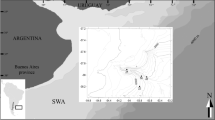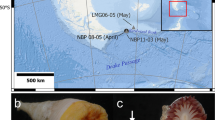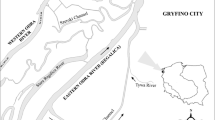Abstract.
Using histological analysis, the reproductive pattern of Mussismilia hispida, a zooxanthellate coral species endemic to the Brazilian coast, was verified. Fragments from two tagged colonies and ten haphazardly chosen colonies were collected monthly, from April 1989 to March 1990, at Praia da Tartaruga, Buzios, Rio de Janeiro state. The results showed that M. hispida is a sequential hermaphroditic species with a broadcast-spawning mode of reproduction. Small immature oocytes were first observed in April 1989 while early spermatic cysts were found in December 1989. After entering the mesoglea, the largest oocytes increase in size by incorporating the smallest ones into their cytoplasm. Mature oocytes and spermaries occurred concomitantly on the same fertile mesenteries during summer, and disappeared from some samples between February 1990 and March 1990 (late summer/early autumn). Gonad maturation occurred with increasing seawater temperature, suggesting seasonal synchrony in the reproductive cycle. Not all oocytes reached their full development, and some were resorbed after a short period of degeneration. No zooxanthellae were found in pre-spawn oocytes, which characteristically had a large amount of vitelline material and a peripheral germ vesicle.
Similar content being viewed by others
Author information
Authors and Affiliations
Additional information
Electronic Publication
Rights and permissions
About this article
Cite this article
Neves, .E., Pires, .D. Sexual reproduction of Brazilian coral Mussismilia hispida (Verrill, 1902). Coral Reefs 21, 161–168 (2002). https://doi.org/10.1007/s00338-002-0217-x
Received:
Accepted:
Issue Date:
DOI: https://doi.org/10.1007/s00338-002-0217-x




